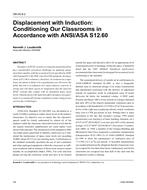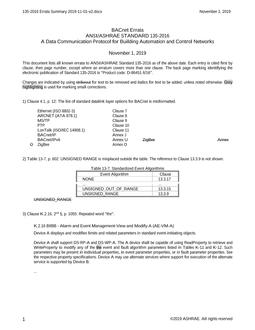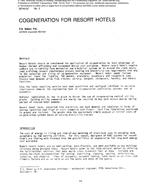In order to obtain fundamental information on the thermal performance of a semi-underground room, calculations based on the two-dimensional finite element method were done using various forms of underground thermal insulation in room models whose size and building materials were similar to those of a test room under standard weather conditions in the city of Sendai in northern Japan. The effect of the following factors on room temperature fluctuation and/or heating and cooling loads was computed (1) height of the room envelope above the ground surface, (2) forms of thermal insulation in the earth around semi-underground rooms, (3) solar radiation incident through windows and use of insulated weather shutters, and (4) air conditioning mode. One of the main findings was that horizontal insulation located at a level 0.3m under the ground surface surrounding the wall was effective in decreasing yearly natural temperature fluctuation and in minimising heating and cooling loads.
KEYWORDS: thermal insulation, Japan, calculating, underground spaces, room temperature, solar radiation, insulating materials, shutters, weather, energy conservation, basements, earth sheltered housing.
Citation: ASHRAE Transactions, vol.96, pt. 1, Atlanta, 1990
Product Details
- Published:
- 1990
- Number of Pages:
- 9
- File Size:
- 1 file , 1.2 MB
- Product Code(s):
- D-18358


